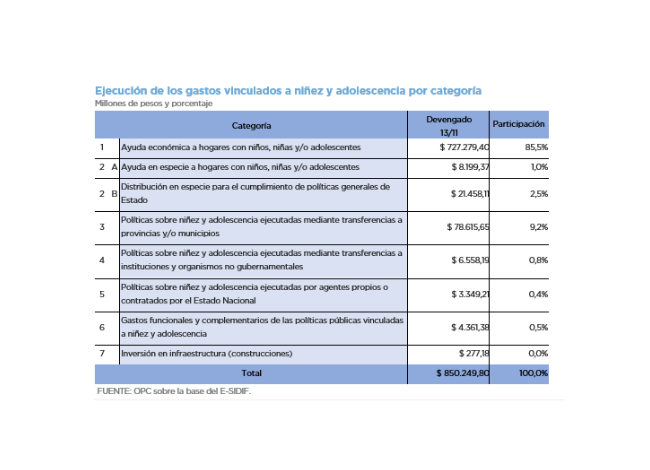
BUDGET EXECUTION OF SOCIAL INVESTMENT IN CHILDREN AND ADOLESCENTS
In mid-2020, there were 13,151,586 children and adolescents (up to 17 years of age) in Argentina. 57.1% of that universe was poor and 15.8%, indigent, rates much higher than the general average of the population.
- About 4.6 million of children and 2.9 million of adolescents were below the poverty line.
- Poverty and indigence rates in households with children and adolescents were three times higher than those in households without children and adolescents.
- Of households with employed persons in which minors live, 40% were below the poverty line. This means that despite having at least one salary, this income was not enough to cover the family’s basic needs.
- Of children and adolescents in compulsory education age (4 to 17 years of age), 96.9%were in school, most of them attending public schools. For the non-compulsory segment, this percentage drops to 14.5%.
- The incidence of poverty drops significantly if the head of the household completed his or her secondary education. However, one out of every six households headed by a person with university education was below the poverty line.
- The actions undertaken by the national government to care for children and adolescents implied a budgetary effort of 3.6% of GDP in 2020, 12.7% of total expenditure.
- Public policy aimed at improving the general conditions of the population, which also have an impact on this segment, required an additional 2.4%.
- State efforts were insufficient to substantially improve the living conditions of this age group, and it is necessary to pay more attention to children and adolescents to guarantee their access to basic rights.
